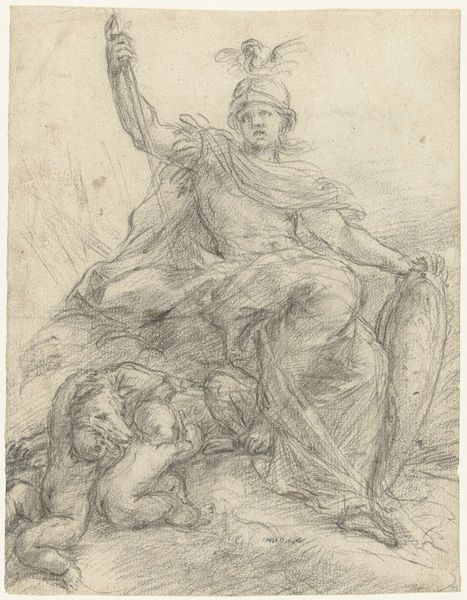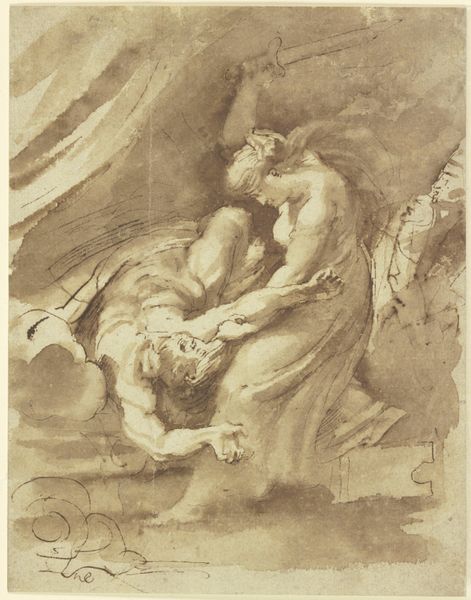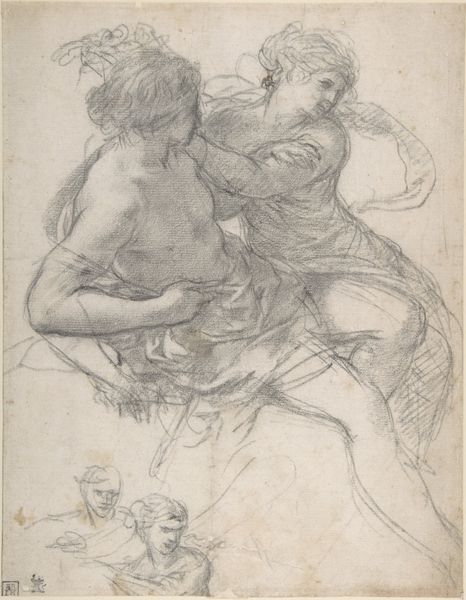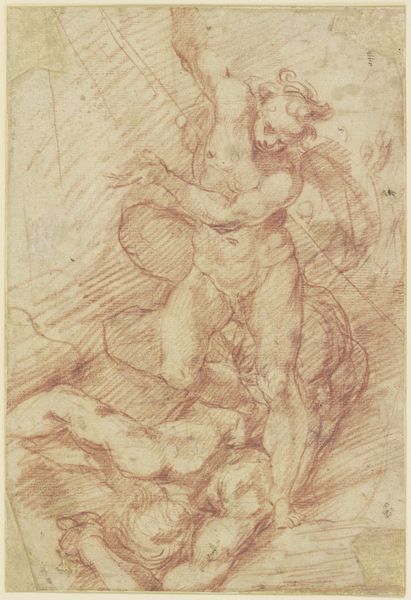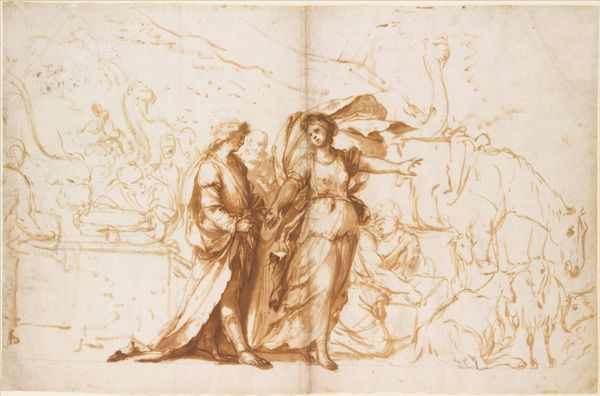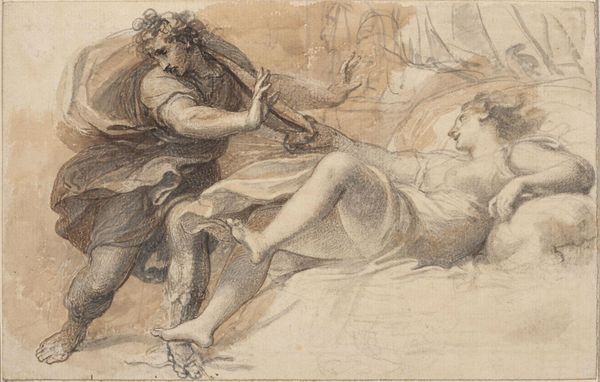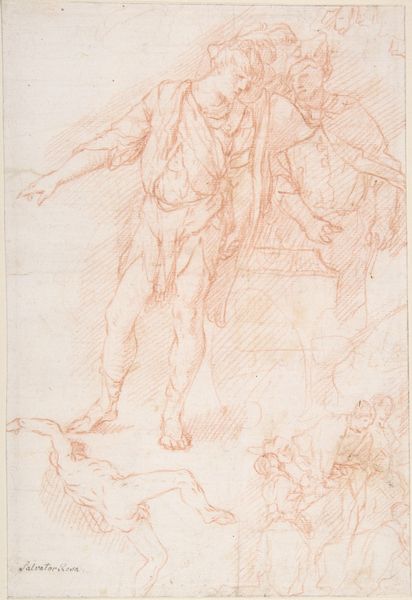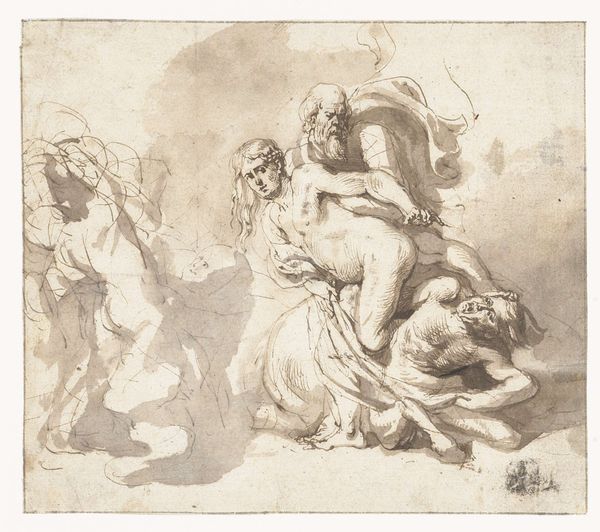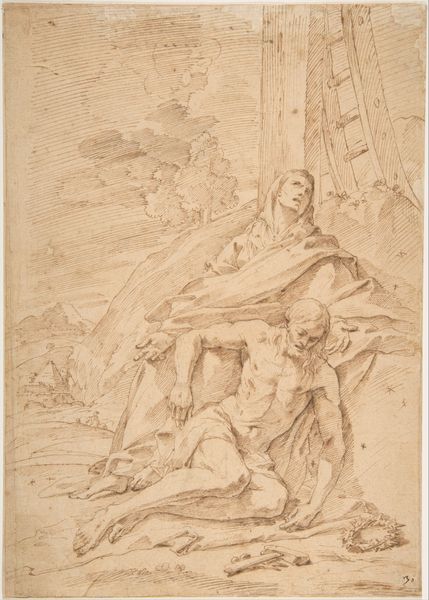
drawing, pencil
#
drawing
#
pencil sketch
#
etching
#
figuration
#
11_renaissance
#
pencil
#
sketchbook drawing
#
history-painting
Dimensions: height 237 mm, width 194 mm
Copyright: Rijks Museum: Open Domain
Curator: Let's discuss this intriguing drawing, “Diana Visiting Endymion,” created sometime between 1622 and 1632 by Giovanni Mannozzi. It's rendered in pencil, offering a glimpse into a mythological encounter. What strikes you first about this sketch? Editor: The rawness of it, honestly. The lines feel so immediate and full of movement. It's not polished, which gives it this fascinating intimacy, like we're seeing the artist thinking on paper. Diana's descent feels purposeful, and Endymion seems caught off guard in his slumber. Curator: Indeed, Mannozzi’s draftsmanship really shines through. The subject itself draws upon a powerful narrative: the moon goddess Diana, eternally captivated by the sleeping shepherd Endymion. Its presence within the art historical narrative is an important record of the fascination the story had on period audiences. The sketchiness underscores the fleeting moment of a clandestine visit. Editor: Clandestine indeed! We see Diana almost hovering over Endymion, highlighting the imbalance of power within this myth. I can’t help but consider the inherent issues present within this narrative-- the act of watching someone sleeping, unconscious, is never a neutral act. Curator: These issues certainly would've resonated with period audiences as well, in regards to class and social hierarchy. Mannozzi may be exploring how the elite and powerful classes used imagery as both social performance and propaganda. It raises the question, whose gaze truly matters within social relations? Editor: Exactly. Is it Diana's privilege as a deity allowing her this transgression, or Mannozzi’s in depicting her here, frozen in time? Curator: The mythology is further interesting when contextualized in art’s history as something created and controlled primarily by powerful men and their stories of desire. Considering this work critically forces an important dialogue. Editor: Absolutely, it forces us to consider our gaze as the audience now and the male dominance embedded within these artistic canons. This seemingly simple drawing actually opens up so many crucial conversations around visibility and social permission. Thank you. Curator: Agreed, thank you as well. It provides not only historical perspective but also the chance to interrogate persistent power structures through a single pencil sketch.
Comments
No comments
Be the first to comment and join the conversation on the ultimate creative platform.

